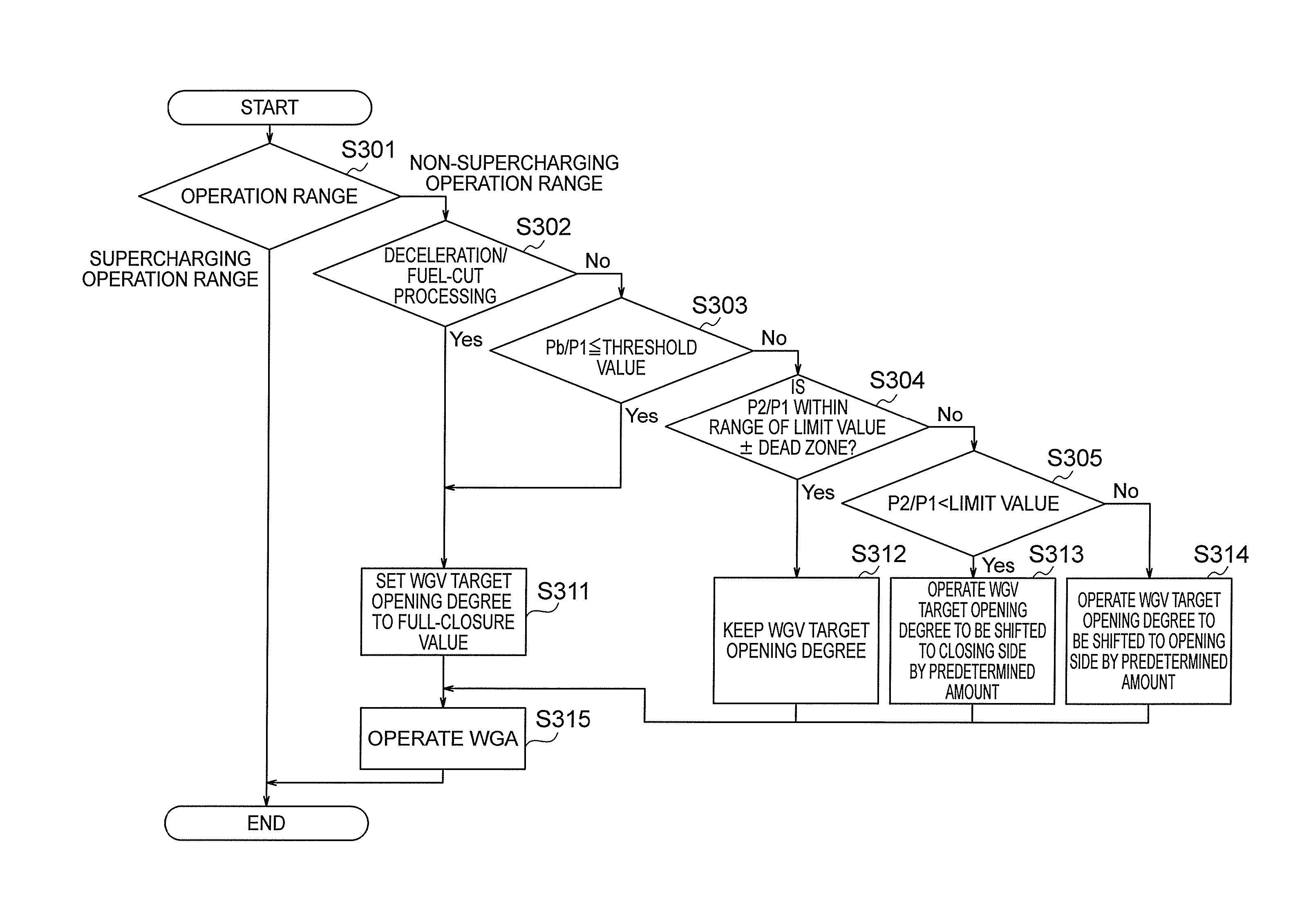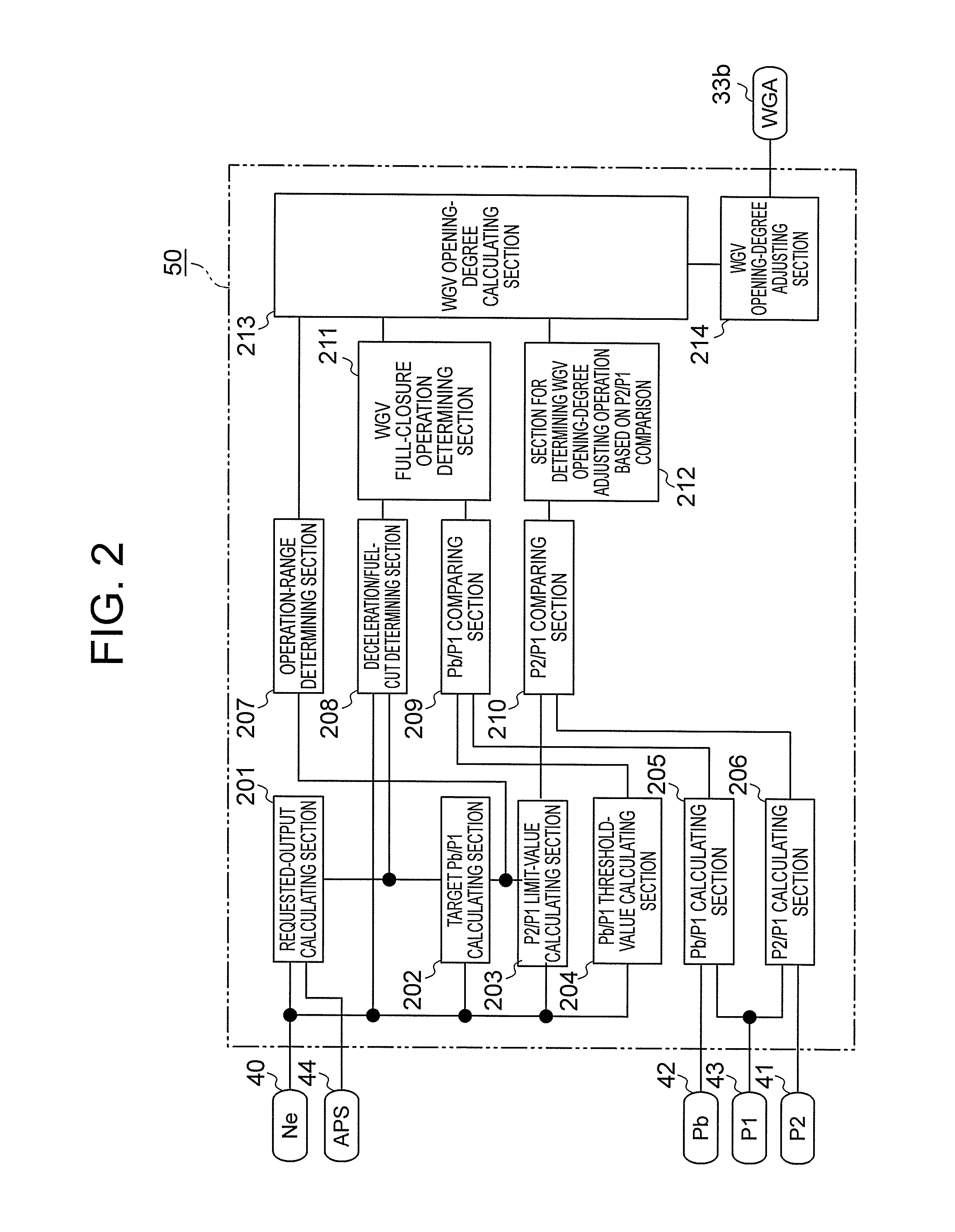Control device and control method for an internal combustion engine
a control device and control method technology, applied in the direction of electric control, combustion engines, machines/engines, etc., can solve the problems of increased supercharging pressure, increased exhaust loss, engine breakage, etc., to maintain fuel economy and improve acceleration performance.
- Summary
- Abstract
- Description
- Claims
- Application Information
AI Technical Summary
Benefits of technology
Problems solved by technology
Method used
Image
Examples
first embodiment
[0024]In the following, a control device for an internal combustion engine according to an embodiment of the present invention is described referring to the accompanying drawings. FIG. 1 is a diagram illustrating a schematic configuration of an internal combustion engine (hereinafter referred to simply as “engine”) and a control device therefor according to a first embodiment of the present invention.
[0025]An engine 10 includes a plurality of combustion chambers 11. An intake passage 20 and an exhaust passage 30 are connected to the engine 10 through an intake manifold 22. To the exhaust passage 30, a turbine housing 32c of a turbocharger 32 is provided. In a region of the exhaust passage 30, which is located upstream of the turbine housing 32c (hereinafter referred to simply as “upstream region”) is coupled to a region of the exhaust passage 30, which is located downstream of the turbine housing 32c (hereinafter referred to simply as “downstream region”) through a bypass passage 33...
PUM
 Login to View More
Login to View More Abstract
Description
Claims
Application Information
 Login to View More
Login to View More - R&D
- Intellectual Property
- Life Sciences
- Materials
- Tech Scout
- Unparalleled Data Quality
- Higher Quality Content
- 60% Fewer Hallucinations
Browse by: Latest US Patents, China's latest patents, Technical Efficacy Thesaurus, Application Domain, Technology Topic, Popular Technical Reports.
© 2025 PatSnap. All rights reserved.Legal|Privacy policy|Modern Slavery Act Transparency Statement|Sitemap|About US| Contact US: help@patsnap.com



